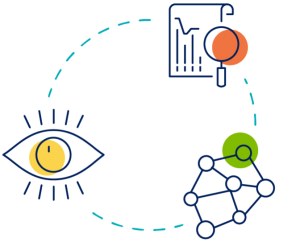When it comes to higher ed student search strategy, the playing field seems to change on a weekly basis. Not only have more schools become test optional, the rules and mechanisms for buying student information are changing constantly and dramatically. Just earlier this year, colleges and universities learned they must cope with an immediate reduction of up to 40 percent of names available from College Board.
It all constitutes a new era of student search — one that requires a focused, diversified, and creative approach that lets you invest in the qualified, right-fit prospective students who are most likely to engage with your institution. How do colleges and universities proceed in this new Search landscape? Here is how Capture Higher Ed uses data, proprietary search software, and expert collaboration to develop a Comprehensive Student Search Strategy.
Colleges and universities are coping with a reduction of up to 40 percent of names available from College Board.
The Capture Difference
Capture’s name buying and search processes are built on a granular, neighborhood-level understanding of past applicant behavior at your school. Knowing address-level information about where your applicants came from allows us to use machine learning to predict where you are likely to gain applicants in the future.

Building accurate predictive models for student name buys is uncommon in our industry.
Building accurate predictive models for student name buys is uncommon in our industry, because the input data (i.e., granular historical data on applicant conversions) is difficult and costly to collect, clean, transform, and model.
Companies that offer a name buying service that does not consider where each of their institutions historical applicants come from at the address-level use a student search strategy that amounts to nothing better than throwing darts at a map in the general direction of campus. Your institutions MUST know, very specifically, where applicants come from to optimize your name buying strategy. Capture delivers this knowledge.
Empirical vs. Intuitive
Capture’s proprietary search software forecasts the likelihood that students from a specific ZIP code will apply by learning the neighborhood-level characteristics that tend to propel students to apply to your school.

Capture forecasts the likelihood that students from a specific ZIP code will apply.
These markets are based on empirical logic that has a tight geographic association with past applicant behavior. For example, the software may guide you to buy the top predicted 5% of zip codes nationwide because the demographic characteristics of those zip codes most closely resemble neighborhoods that produced the most applicants for your school in the past.
Traditionally defined markets might include all names from large geographic areas that are proximate to campus, resulting in huge inefficiencies in name buying. For example, a traditional primary market might lead you to buy all names in your home state because you get most of your applicants there. This sounds reasonable and conservative, but many zip codes in your state will not produce any applicants for your school, thus wasting precious resources on unproductive neighborhoods
Capture Search Consulting: What You Get
A PROSPECTIVE STUDENT PROFILE
Capture’s enrollment experts and data scientists examine historical applicant conversions, current market trends, and your strategic needs while leveraging machine learning technology to profile your prospective students. This delivers engaged, qualified, right-fit prospective students who will engage with your institution.
A COMPREHENSIVE APPROACH
A sophisticated approach designed for your enrollment goals, Capture’s comprehensive student search strategy includes a multi-year data assessment, market segmentation that appends over 150 variables, and name sourcing from Encoura/ACT, the College Board, and other entities.
A METHODOLOGY
The predictive models that inform Capture’s proprietary software use hundreds of historical, demographic, and behavioral data points, allowing you to pinpoint your successful markets, optimize your search, and help shape your class. Managed by a data science team and powered by machine learning, our predictive models pinpoint students who are most likely to apply to your institution.
A TEAM OF EXPERTS
Capture’s higher education experts, who know the inner workings of student search, work with your team to understand the actual and aspirational markets and segments that need to be targeted and overlay 3-5 years of historic enrollment data to create a search strategy that meets your enrollment goals.
Two Quick Recommendations
The growing test-optional movement and recent privacy changes at College Board have led to a significant decline in student information available for purchase. To cope with the immediate reduction of up to 40% of names available from College Board, here is what Capture recommends:
- When it comes to buying names from vendors, do not put all your eggs in one basket.
- Intelligently expand the areas from which you will buy names. Use Capture’s top-quantile predictions to buy geographic areas that fall outside of traditional market definitions.
Do you want to find out how Capture’s search consulting can help you optimize your student search strategy? Contact us at: www.capturehighered.com/contact/
By Kevin Hyde, Senior Content Manager, Capture Higher Ed




